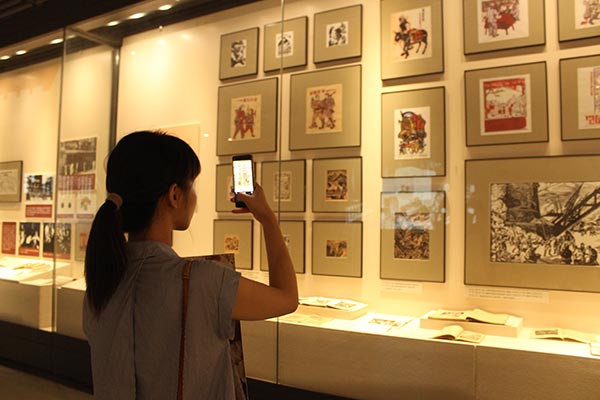 |
|
The Immortal Great Wall exhibition at National Library of China displays 1,500 text and video files from the War of Resistance against Japanese Aggression (1937-45). [Wang Kaihao / For China Daily] |
Chen says the Japanese bombing of the Shanghai-based Commercial Press in 1932, prompted many Chinese literati to join the frontline of the war movement. China's national anthem, Volunteers Marching On, was born at that time.
In 1940, Japan's bombing of Chongqing destroyed most ancient books from Tsinghua University. The books had been evacuated to Chongqing under the belief they would be safer there. The collection's demise is considered one of the greatest losses in the contemporary history of Chinese literature.
"Opera, literature, film, music and fine arts," Chen says of the manuscripts on display. "The entire Chinese literati became geared up to create works, spread patriotism and inspire people all over the country. Though they may not hold guns, their contributions to the final victory should not be undervalued."
In a corner of the exhibition hall, visitors are able to put on headphones and listen to inspirational melodies.
Screens in the exhibition hall play videos of interviews with veteran Chinese soldiers. On a photo wall next to the screens, pictures are printed in black-and-white, indicating that these veterans have passed away since being interviewed.
NLC launched a project to record the oral history of the war in 2012. Chen says the mission to save the living history is urgent.
A virtual exhibition has also been launched on the library's official website. Last week, a digital database of documents from the Tokyo Trials was launched online.
The results of the trials, also known as the International Military Tribunal for the Far East, have been denied by some people in Japan in the recent years, which, Chen explains, is one reason in-depth study of the trials began in 2012.
More than 49,000 pages of trial records, 2,400 pages of written judgments, and other documents and historical photos are available on the database.
"Most of the files are collected from overseas, which have filled the void in domestic files, and we also expect the public to provide more evidence to enrich its content and support relevant academic studies," Chen says.